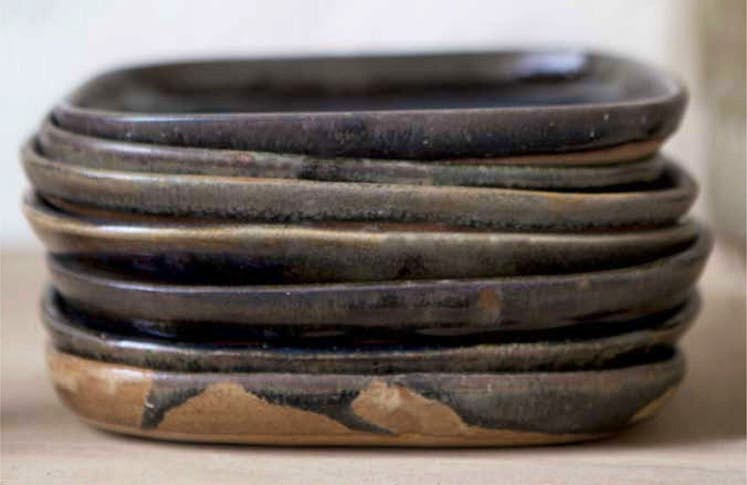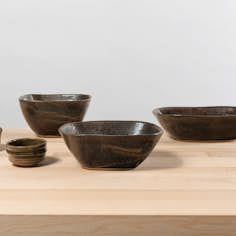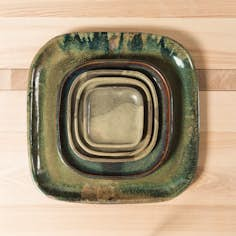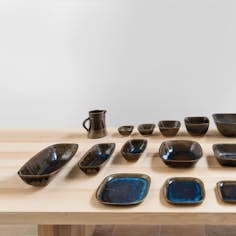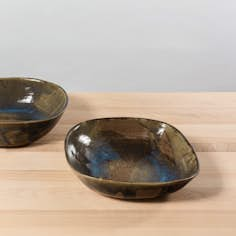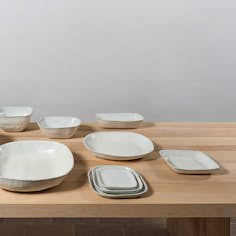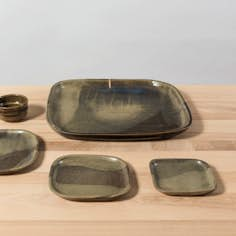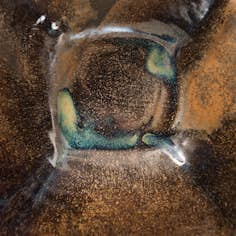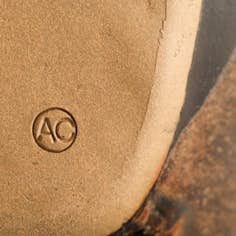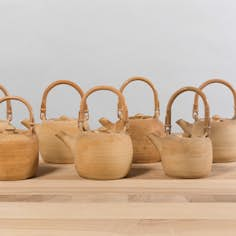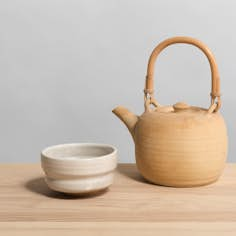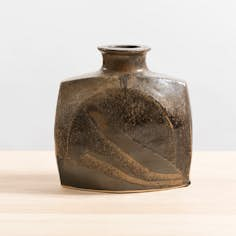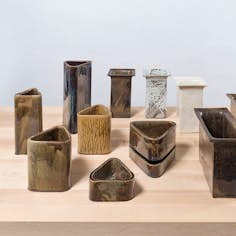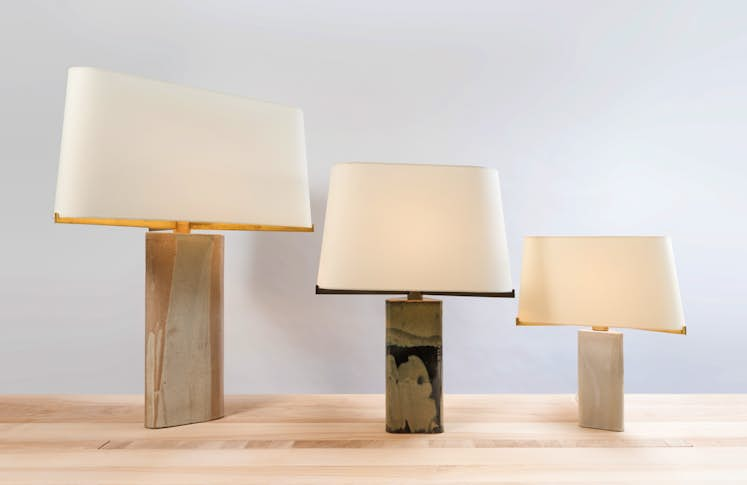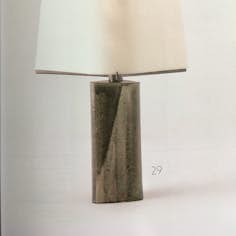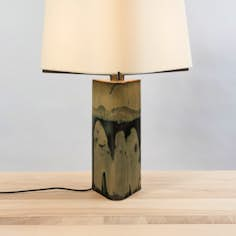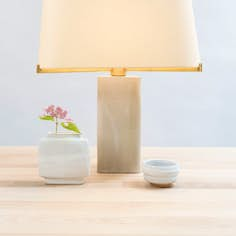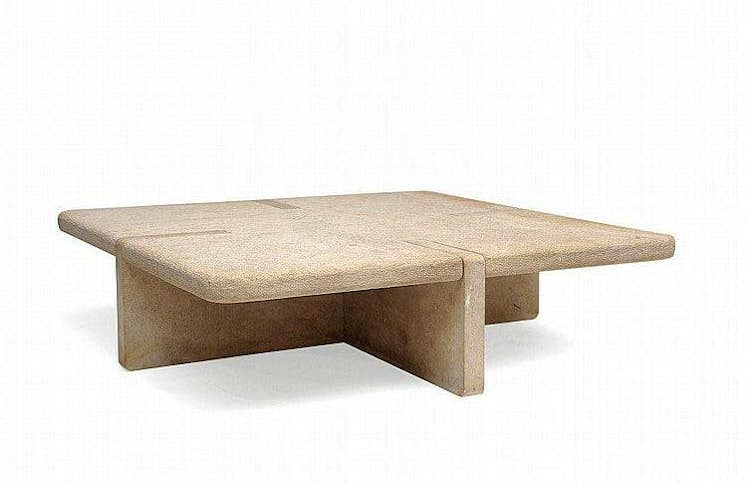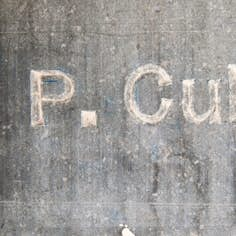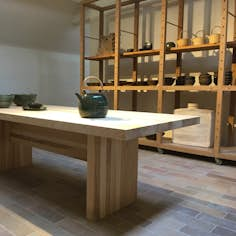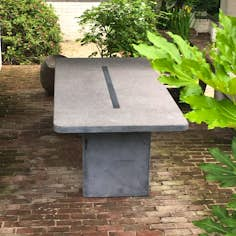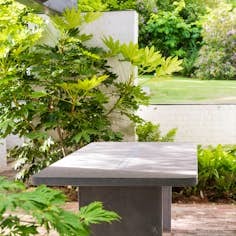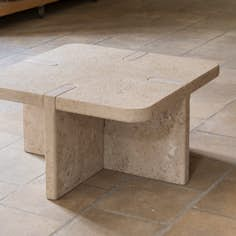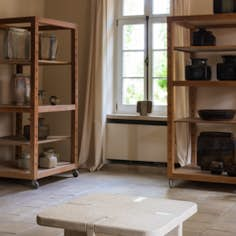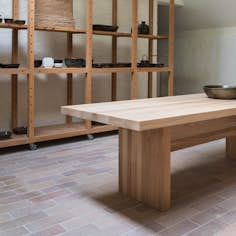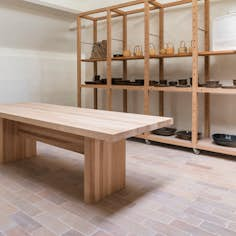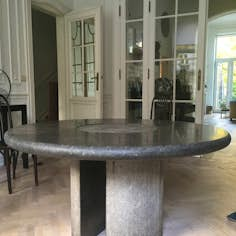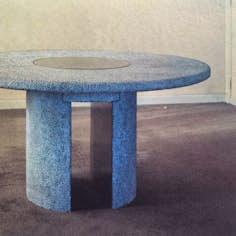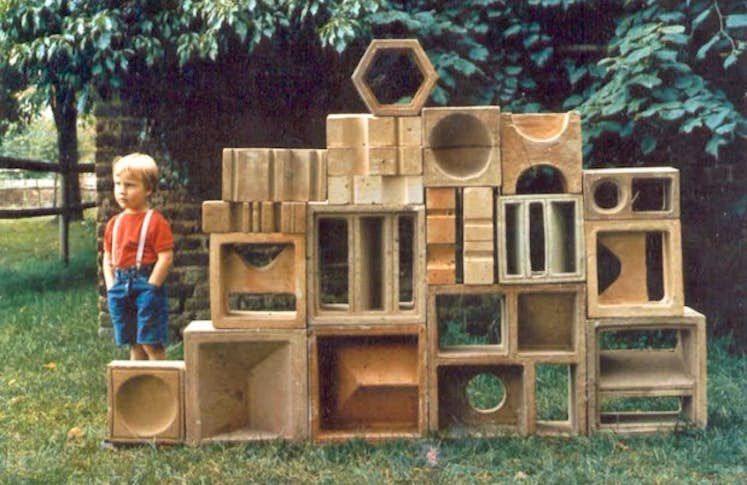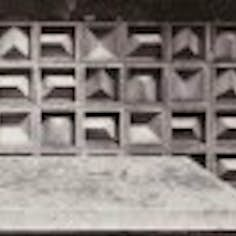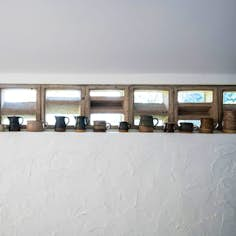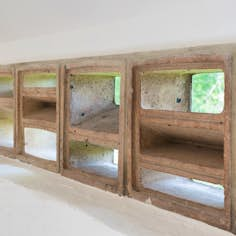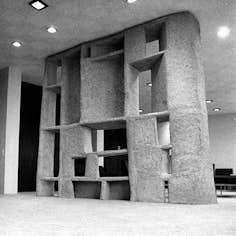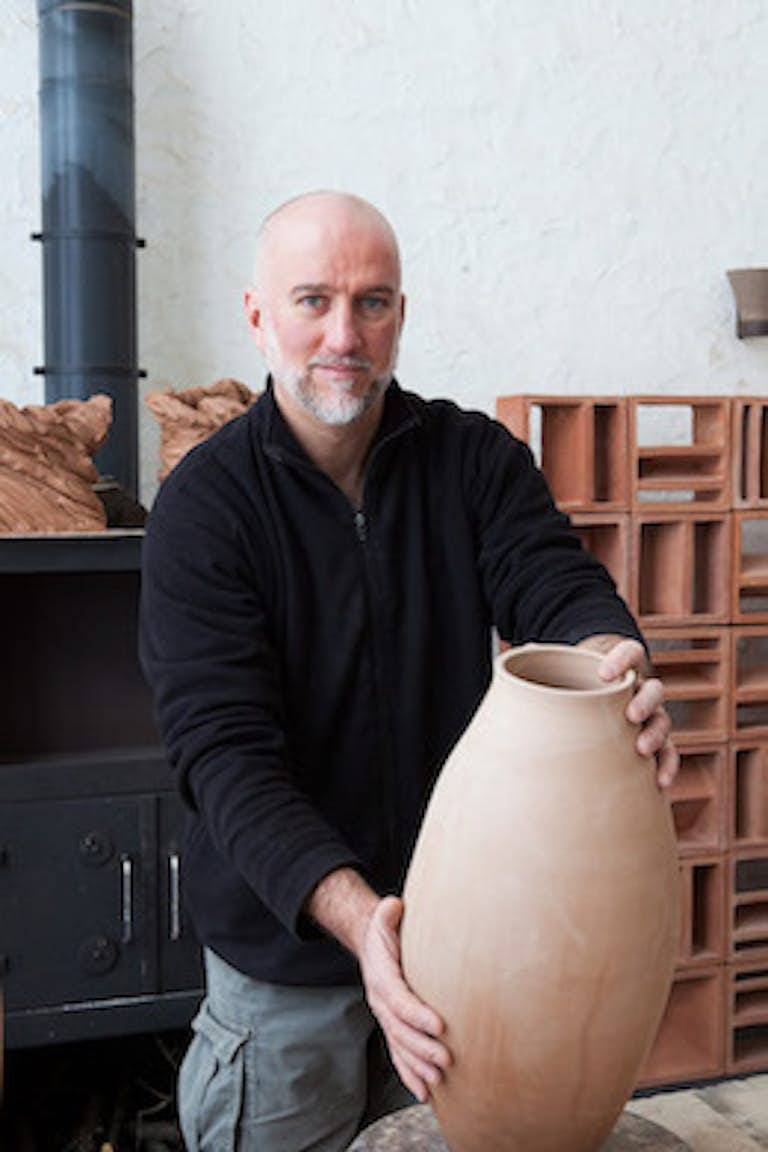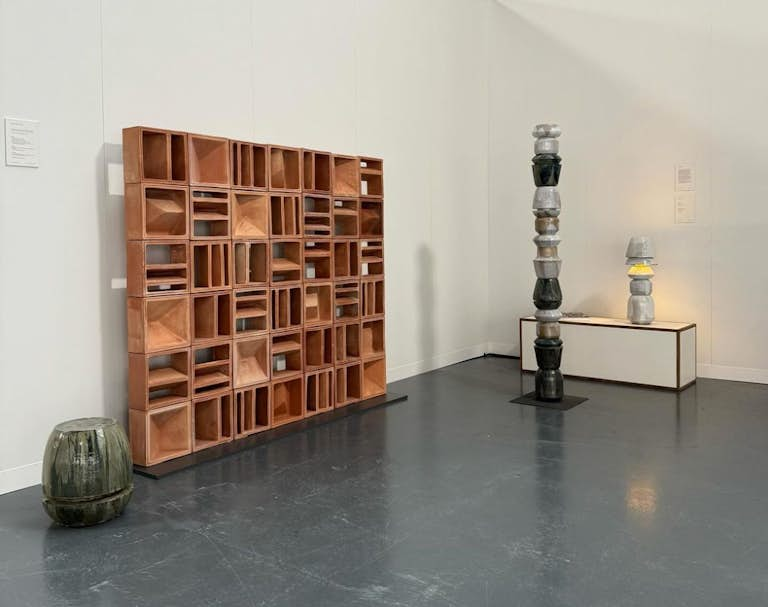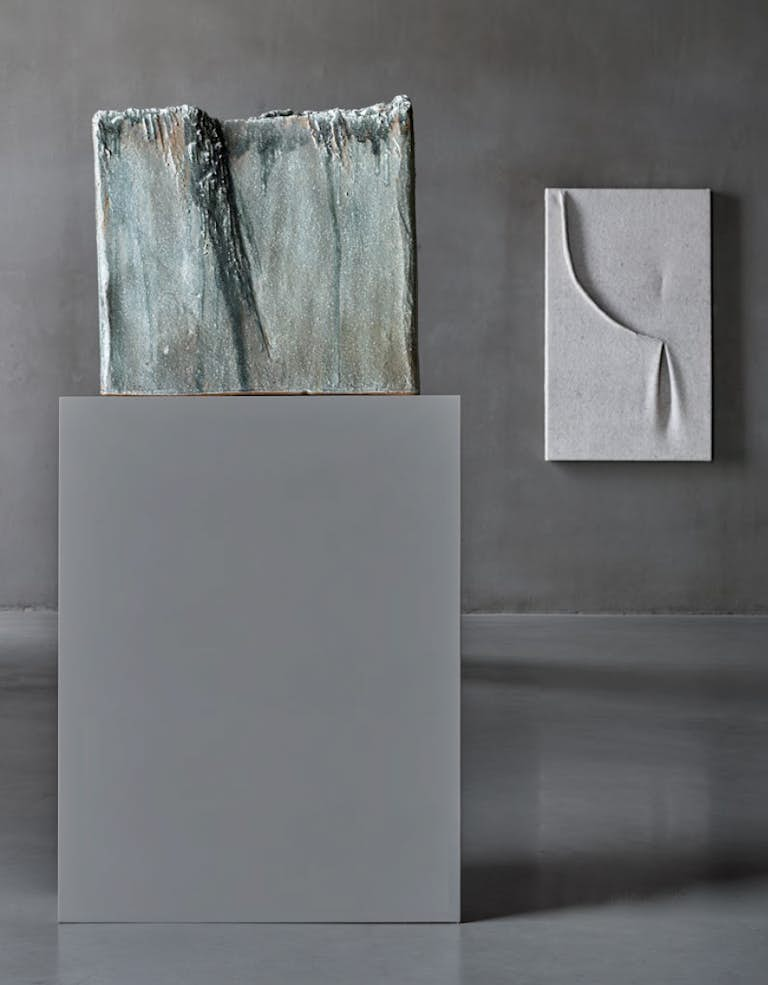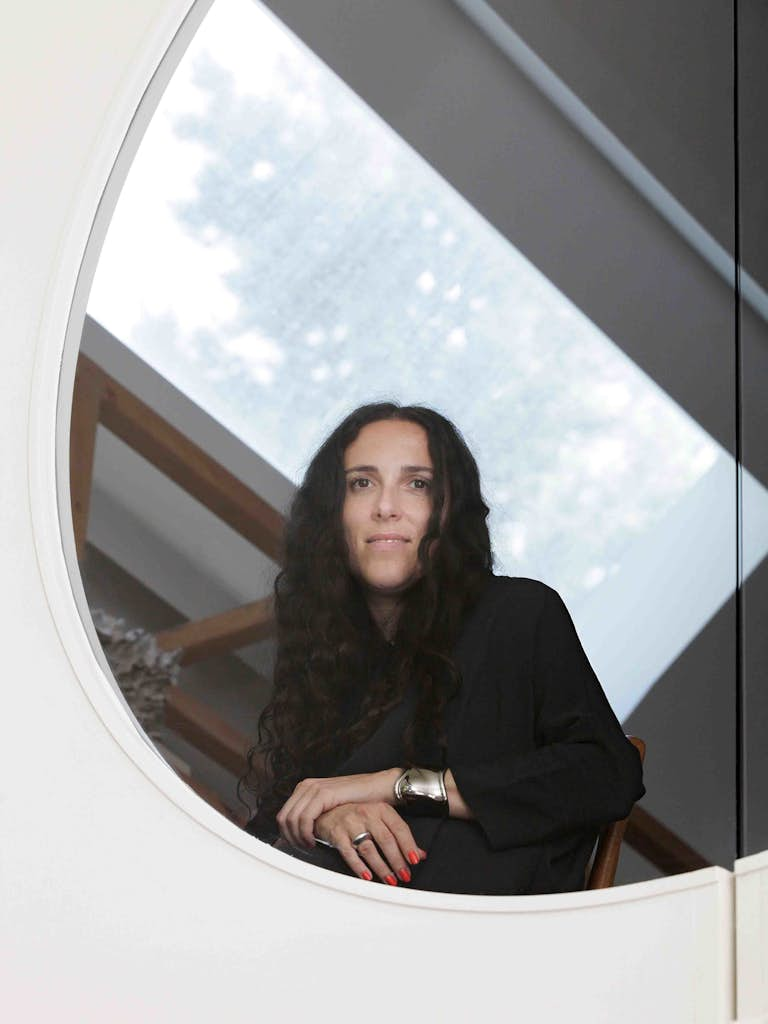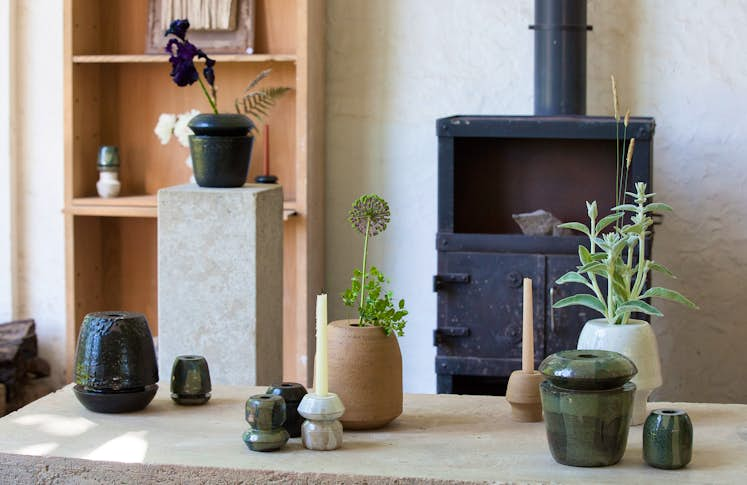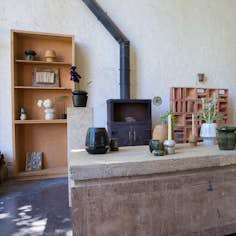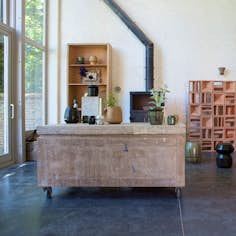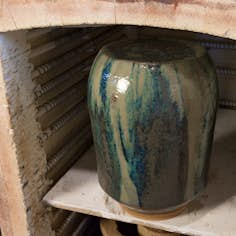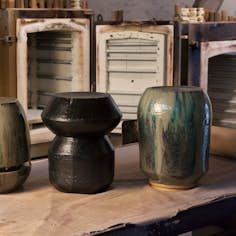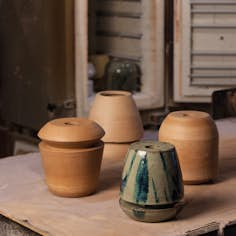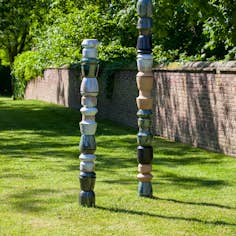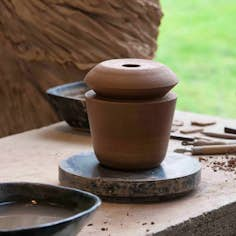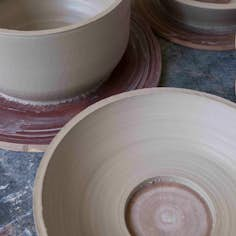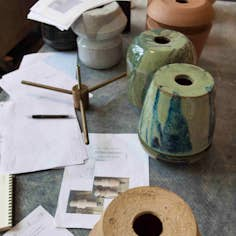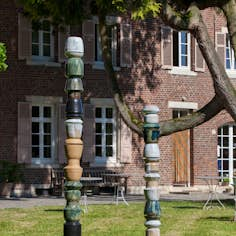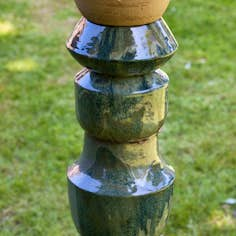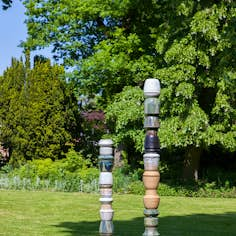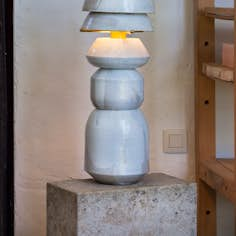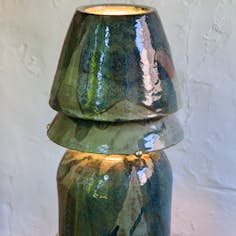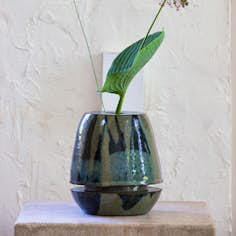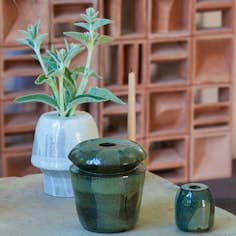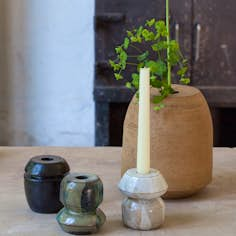the creations

1. Earthenware pottery
The utilitarian ceramics of Pierre Culot hark back to traditional rural pottery. This is sober and robust crockery in classic and simple shapes. This simplicity is translated by the rejection of any superfluous element. The enamel is discreet, applied freely. This line runs throughout Pierre Culot’s entire œuvre.
The artist also developed a set of more personal square shapes.
The traces of turning are visible. In this way he turns his back on a consumer society that offers uniform and industrial products. The artist’s work also translates a desire to return to his roots and to the beauty of simple, basic things. The artist demonstrated his common mindset with traditional potters, which would never leave him.
2. Lamps
The first lamps date back to 1965. In 1980, the artist made three models of different sized lampstands, today back in the workshop. The brass support was inspired by the lamps of Jules Wabbes. Shortly afterwards the artist created wall lamps of different sizes combining bronze and terracotta.
3. Tables
The first table in blue stone was made in 1975. In the 1980s, Pierre Culot designed and commissioned a set of low tables in Burgundy stone and Hainaut blue stone. He also designed an oval table which he produced in several editions. There was also a high table of which we only found the plans. It was only assembled after his death.
4. Claustras – bas-reliefs
From 1964 to 1970, Pierre Culot collaborated with various architects in creating ceramic claustras destined for both private and public places. To do so the artist developed a vocabulary using the square and the rectangle as the basic elements. Inside these he integrated one or several geometric shapes. Pierre Culot borrowed this repertoire from abstraction, drawing inspiration partly from a plastic alphabet formulated by the painter Vasarely in 1959. The artist liked to play on the depth or orientation of these shapes to modulate the light.
